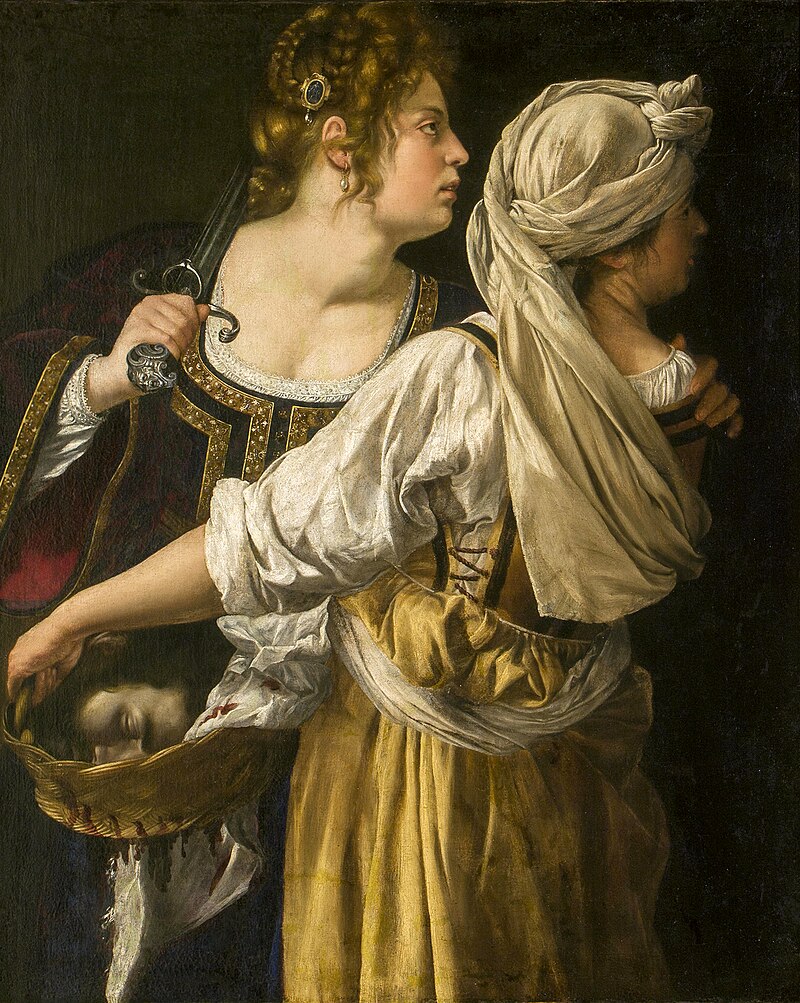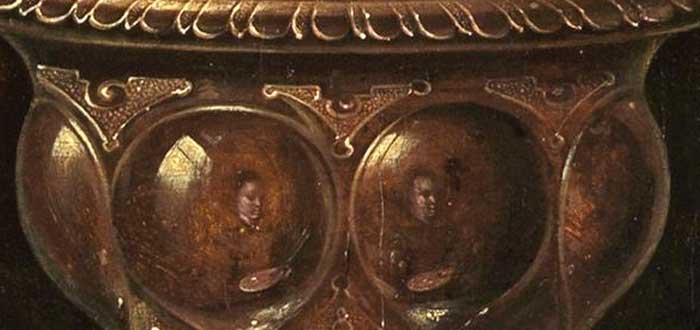 |
| Artemisia Gentileschi. Judith Slaying Holofernes |
Last summer when I began writing about Women Artists I knew this day would come. The day I would have to write about Artemisia Gentileschi. Artemisia as a subject is terrifying - mostly because I admire her and feel small in comparison to the task of sharing her story. Many authors have written about her, so, what could I add to that story?
With your indulgence I hope to explain over the next few blog posts why I'm certain that Artemisia Gentileschi is the quintessential Bad-Ass.
It would be very easy to start with "Artemisia Gentileschi was born in Rome on July 8, 1593". But, instead, let's start with the paintings - specifically the subjects of the paintings. Later, when I share more about her life and art, the particular way she tells the stories of the subjects will begin to make sense.
 No Renaissance artist portrayed women in the same way Artemisia Gentileschi did. Artemisia made the women in her paintings whole, passionate, vibrant, and powerful. In Judith Slaying Holofernes* Artemisia portrays the women as the heroes of the moment. Rather than painting Judith as a courageous beauty she is portrayed in the act of beheading Holofernes. Judith's maid assists by holding the struggling man down while she labors with the sword against his throat. Blood dramatically sprays across the maids arm, but neither women flinch. They are terrible and beautiful carrying out their mission.
No Renaissance artist portrayed women in the same way Artemisia Gentileschi did. Artemisia made the women in her paintings whole, passionate, vibrant, and powerful. In Judith Slaying Holofernes* Artemisia portrays the women as the heroes of the moment. Rather than painting Judith as a courageous beauty she is portrayed in the act of beheading Holofernes. Judith's maid assists by holding the struggling man down while she labors with the sword against his throat. Blood dramatically sprays across the maids arm, but neither women flinch. They are terrible and beautiful carrying out their mission.Artemisia painted this subject several times and from different points of view. One version captures the moments immediately after the beheading as Judith and her maid collect Holofernes head in a basket. They pause, looking up from their grisly task as though they have been startled. Another version shows Judith and the Maidservant immediately after their work is done, peering back over their shoulders as though they are checking to see if they are being followed. In this painting we see Judith, triumphant, sword resting on her shoulder. Her face calm and resolute. Almost as an afterthought the head of Holofernes rests in the maids basket.
 |
| Artemisia Gentileschi, Suzanna and the Elders |
In Artemisia's Suzanna and the Elders Suzanna is not some flirtatious girl who coyly ignores the attention from the old men, as in Massys piece (below). No, Artemisia painted Suzanna twisting away from the two lecherous old men watching her, horrified at being spied on.
 |
| Jan Massys, Suzanne and the Elders |
*As the ancient story relates, Assyrian king Nebuchadnezzar sent his general Holofernes to besiege the Jewish city of Bethulia. Judith, described as a beautiful young widow, resolves to save her people by slaying Holofernes herself. After reciting a long prayer to God, she dons her finest clothes in order to seduce him. After Holofernes has drank enough wine to become intoxicated, Judith decapitates him with his own sword, winning a decisive victory for the Israelites. (Angelica Frey, ARTSY, April 04, 2019)
+++++++++++++++++++
Selected Sources
The Art Story: Artemisia Gentileschi Artworks. https://www.theartstory.org/artist/gentileschi-artemisia/artworks/
Frey, Angelica. How Judith Beheading Holofernes Became Art History’s Favorite Icon of Female Rage. https://www.artsy.net/article/artsy-editorial-judith-beheading-holofernes-art-historys-favorite-icon-female-rage
Vickery, Amanda. Bring female artists out of storage. https://www.theguardian.com/artanddesign/2014/may/16/bring-women-artists-out-of-storage


